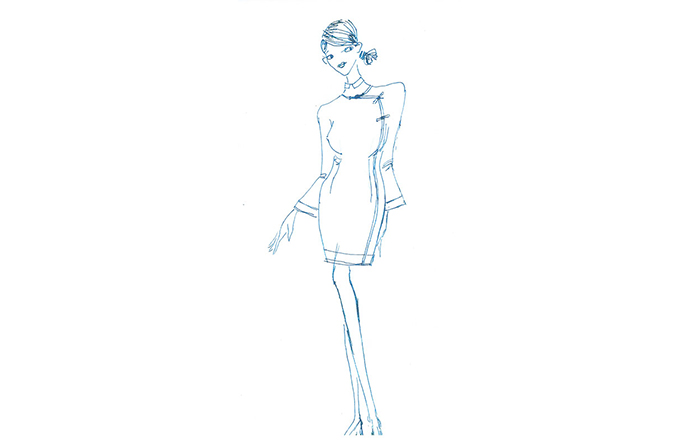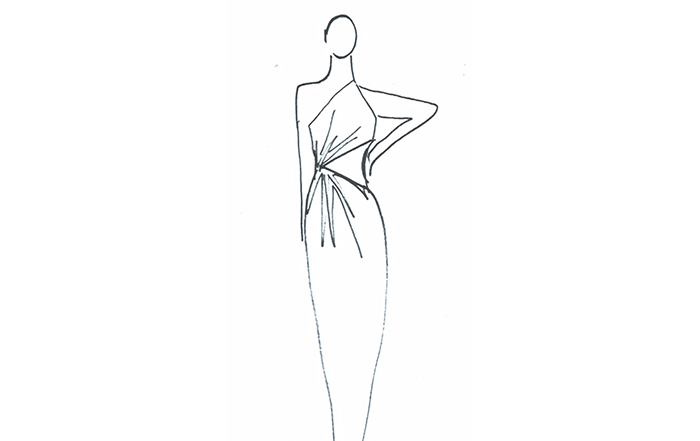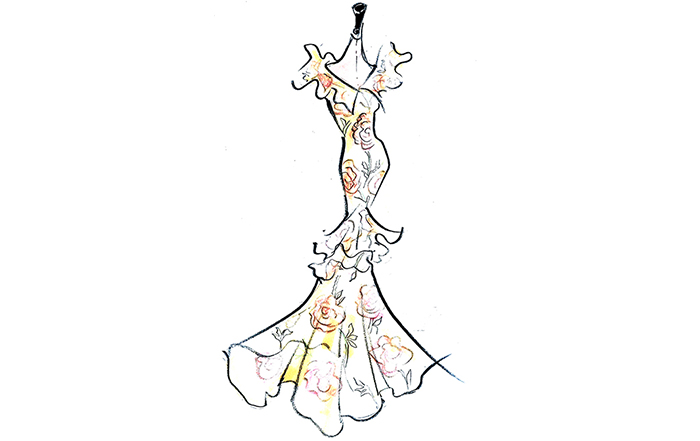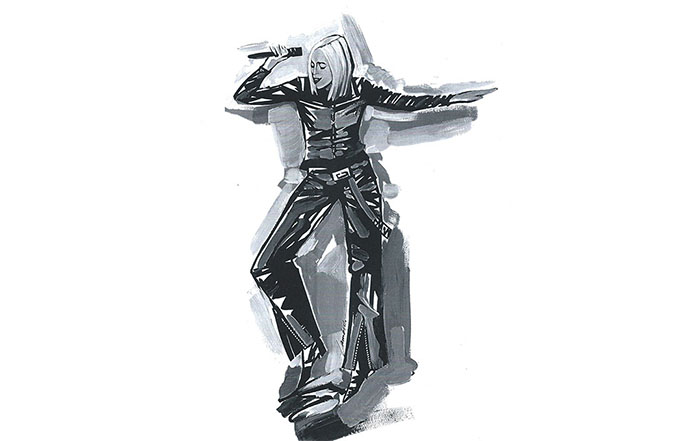by MARYLOU LUTHER
Illustration by Han Feng
Dear Marylou: I will be going to Shanghai in May, and am wondering if anyone there still wears the cheongsam? I have a beautiful embroidered satin version I could take with me, but not if I would be the only one to wear one. Also, what is the difference between the cheongsam and the qipao?__A.C., Los Angeles, CA.
Dear A.C.: I took your question to China-born, award-winning New York apparel designer/costume designer Han Feng, who commutes between Shanghai and New York, where she operates art spaces. She says that the traditional cheongsam, once considered a relic of the past, is becoming more interesting to China’s young women.
“This generation is interested in reconstructing outfits drawn from almost 1500 years of costume history, anywhere between the Teng and the Qing dynasties—600’s to 1900’s. Their elaborate creations are known as hanfu, and wheras in the past one would only see them on TV in costume dramas, today you see them on weekends in the cities and scenic areas, camera-ready to share on social media. Elements of traditional Chinese dress are more commonly seen as a mix of a pencil dress and a qipao.”
To Han Feng, there is no difference between the cheongsam and the qipao, explaining that the look has “only been around a hundred years or so, and that the word cheongsam is based on the Cantonese pronunciation of the name, and qipao is the name used in Mandarin. Her illustration here is the classic cheongsam/qipao made famous in the last century by Madame Chiang Kai-shek.
Dear Marylou: What is the difference between a Mao collar and a Mandarin collar? They look alike to me.__D.L., Boston, MA.
Dear D.L.: They look alike to me, too. But China-born New York designer Vivienne Tam says they are totally different. “Many think of the Mao collar, named for Chairman Mao Zedong, China’s leader during the Cultural Revolution, as being Chinese, but it was borrowed originally from the Germans, who wore them at university. It is therefore hard to claim that the Mao suit is Chinese. The Mao is two-layer, folded down, while the Mandarin is stiff and high, designed to block the cold. The Mandarin has appeared in different incarnations throughout time, from the horseback fashions of the Manchurians of the Qing dynasty to the emperor’s dragon robe to everywoman’s cheongsam.
Dear Marylou: I’m a stay-at-home mom and I’m really concerned about protecting my family, your family, the earth from global warming. What are things I can do—or not do—to help. Or can one individual really do anything to help?__D.P., Lincoln, NE.
Dear D.P.: New York designer Eileen Fisher, known for her work in sustainability, has a list of what-to-do actions to help save the planet that include such simple acts as switching to cold water the next time you fill your washing machine. According to Fisher and her eco experts, by switching to cold you can cut your energy impact by up to 90%. To see the entire list go to www.eileenfisher.com/repair-and-care/wash-green.
Dear Marylou: In shopping for my engagement ring, my fiancé and I found a ring we both love and can afford, but it has a flaw. The flaw is totally undetectable to our eyes, but shows up the the jeweler’s loupe. Should we buy it?__E.T., Des Moines, IA.
Dear E.T.: Gemstone expert Camilla Dietz Bergeron says not to be too insistent on a flawless diamond. “While color and clarity are important considerations, a smaller flawless tone is not necessarily more desirable than a larger one with a slight or indistinguishable flaw.” So yes, go ahead and buy it!
Marylou welcomes questions for use in this column but regrets she cannot answer mail personally. Please send your questions in.




